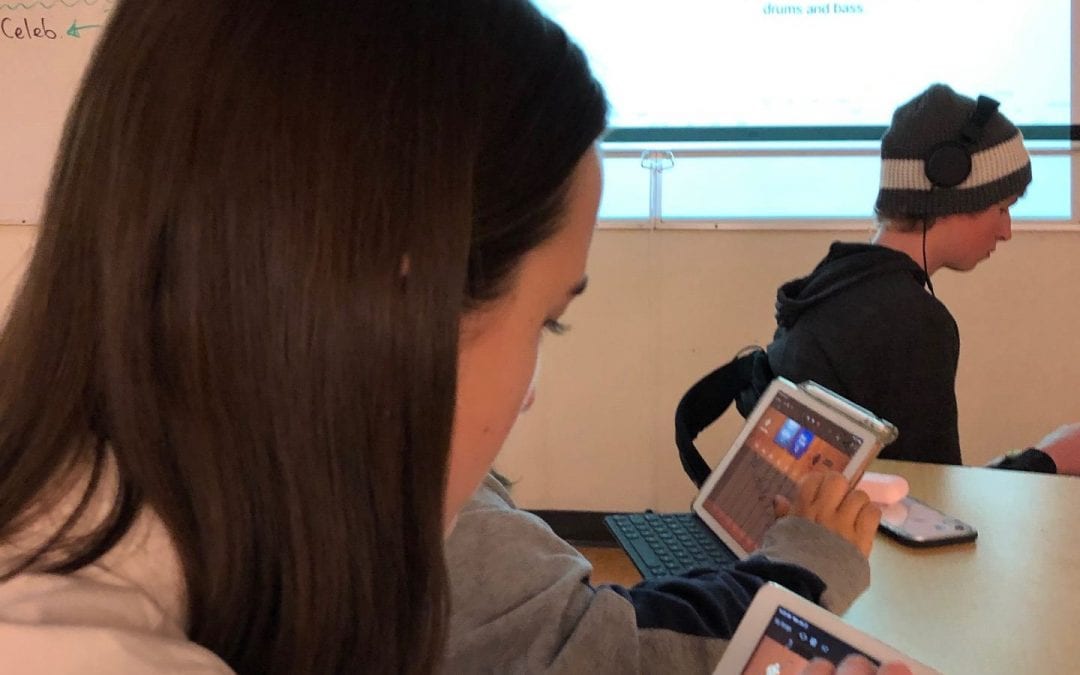We have described before how as teachers, one of the more challenging apps to work with is GarageBand. Luckily the Everyone Can Create Music guide has been amazingly helpful in this regard. This lesson was no exception.
PLP has a very deliberate sequence of skills when it comes to technology and storytelling. From the storytelling in grade 8 with still images, through the story finding in grade 9 with video, to the grade 10 where we take away images and work with story crafting and podcasting, the PLP teachers work to build our learners’ skills across technological mediums and work with the students’ own passions.
So in the new year, it was time to turn the PLP 10’s focus to podcasting. That meant spending some time in GarageBand, especially since their first Humanities project was to involve creating a class repository of podcasts of World War II veterans.
In order to create a common link between the podcasts, the class agreed that they would need a common form of introduction to the podcasts and after listening to a variety of different styles of podcasts, the class agreed that a strong way to do that would be to have a musical introduction that is the same for each individual podcast. And, of course, we all agree that the class needed to compose it!
So we build on our earlier start in GarageBand with Live Loops and dove deeper into song construction with Chapter 2 and created our own remixes of “Can’t Stop the Feeling”. We all love this song and had a lot of fun turning it upside down with our own versions. Next, we turned our attention to Chapter 4 build chords and melodic instruments. This is where the lessons really took off.
For non-musicians, this chapter is pretty challenging as it introduces chord progressions and melodic components that are very in-depth. However, the amazing thing about the guide is that it truly does breakdown the task and make it truly easy for an instructor to help learners through and for learners to build understanding of what is in actual fact complex musical theory.
We did complete all the activities in the chapter before assigning the project at the end of creating an instrumental song. In this case, we tied the song into their podcast project and required it to be less than 1 minute and with a tone and mood that would be appropriate for the World War II podcasts they were creating.
Then, we listened to each person’s composition as a class, anonymously and did a critique and voting system on to which ones should move forward as considered for our common podcast introductions. The three songs at the top of the podcast were the top contenders! Please have a listen and look to a future post to hear the final creations!


